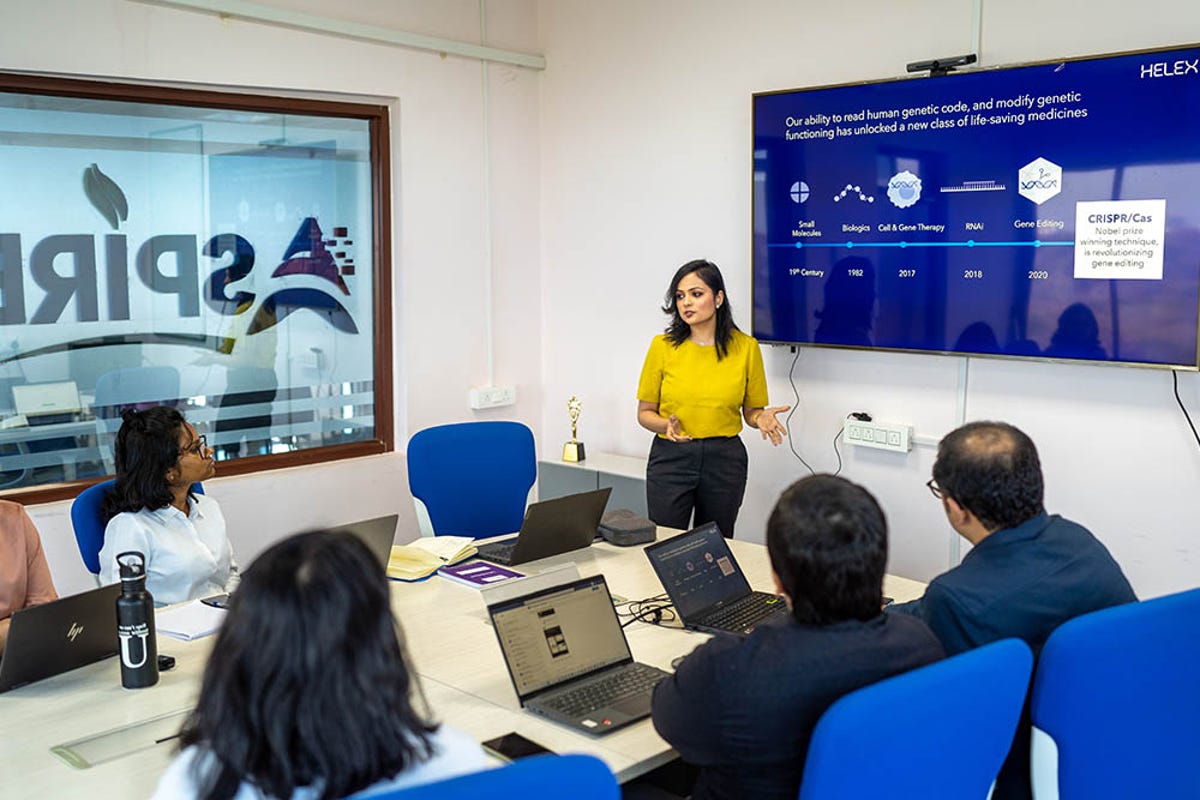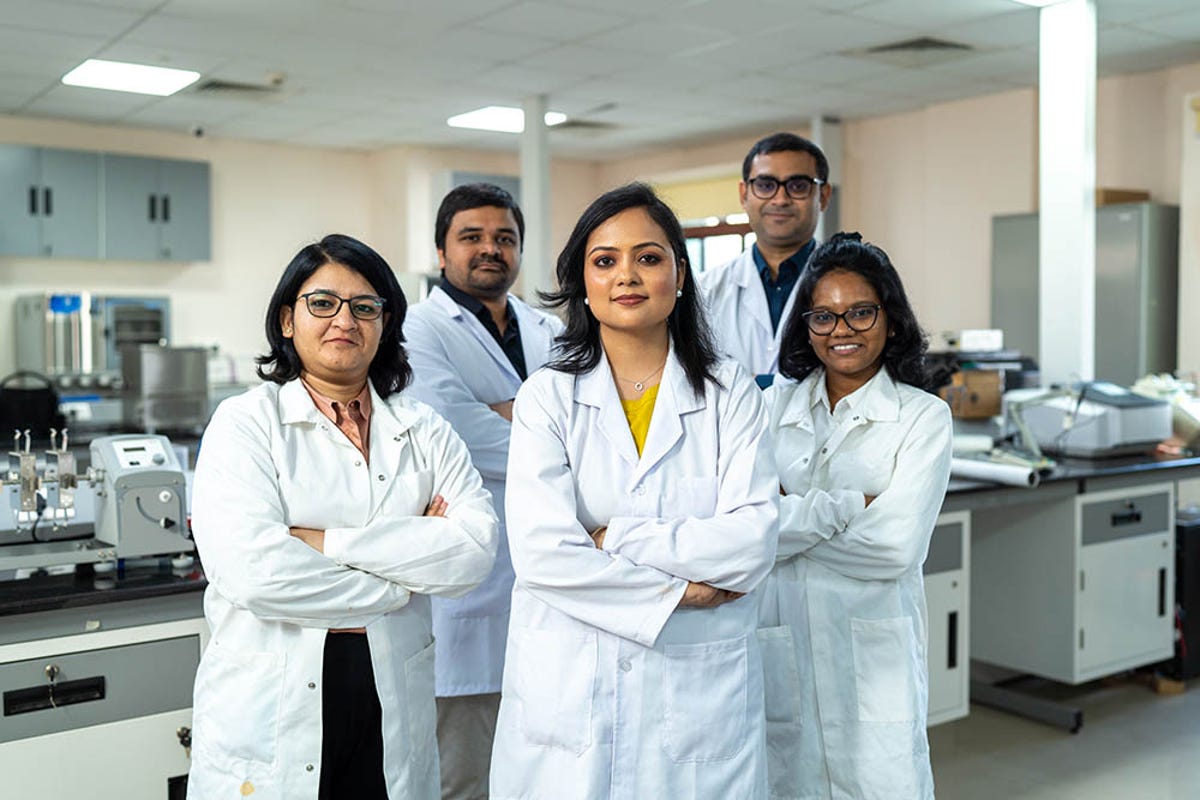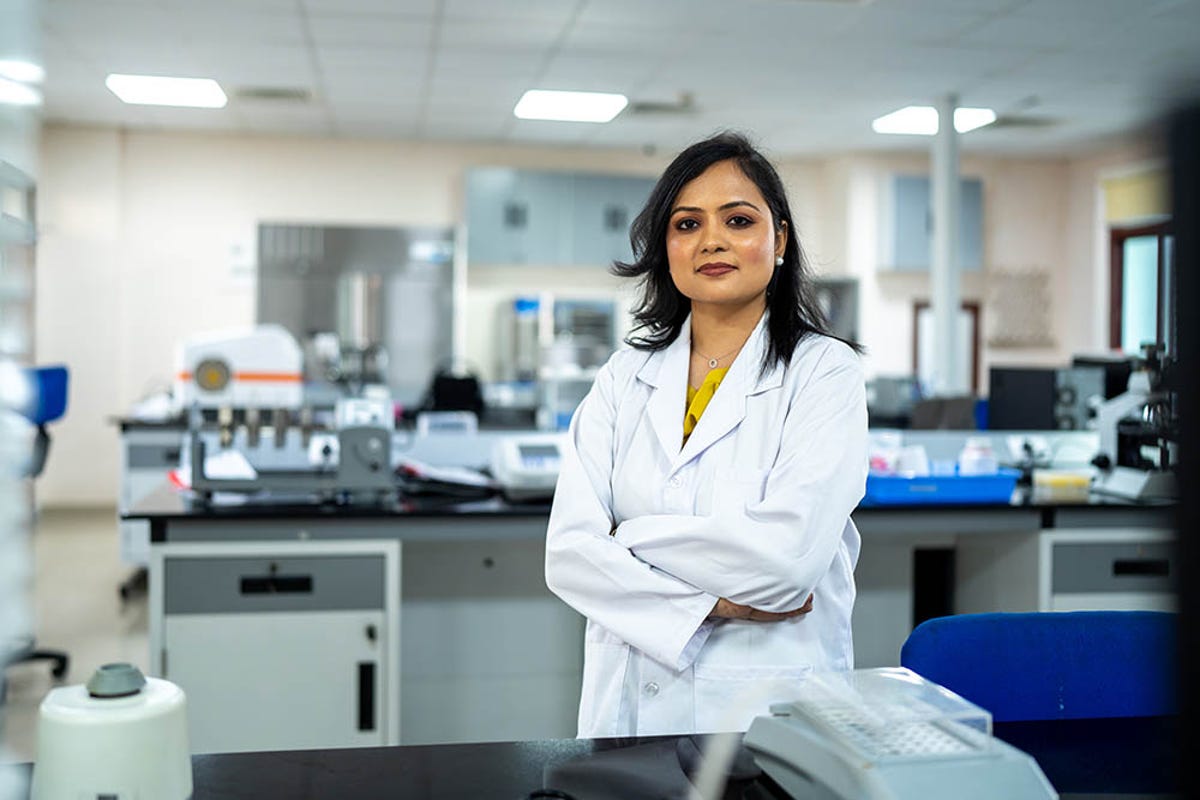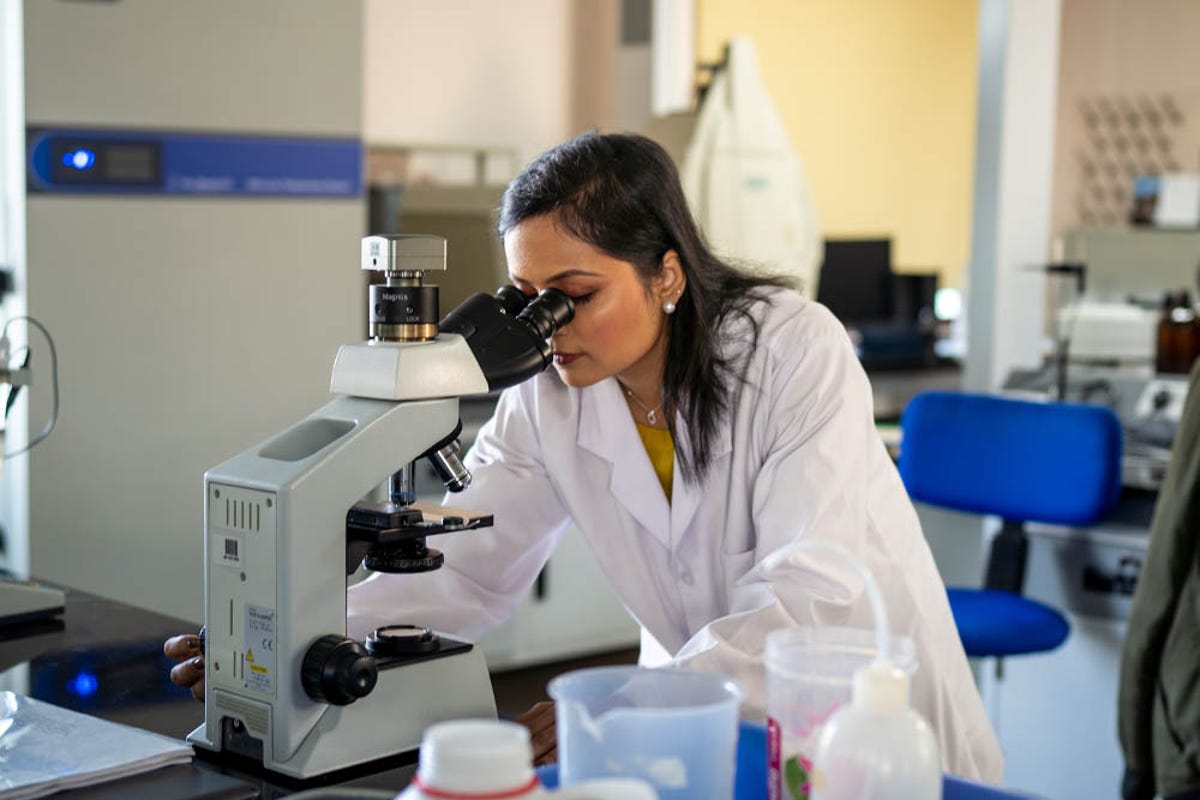Fellow Portrait
Poulami Chaudhuri
Helex

Helex focuses on making gene editing more efficient, safer, and reliable for any disease with a genetic basis.
Science & Technology Pioneer Award
India
Fellow
2023
Updated March 2023
The power to alter the human genome brings opportunity—and risk
The human genome project, completed in 2003, has yielded unprecedented insight into the genetic code responsible for making humans who we are. In the last ten years, genetic research has moved from the lab to the real world. New tools such as the CRISPR-Cas9 genome editing technology give scientists the capacity to rewrite DNA, offering huge opportunities to reverse genetic disease.
This power carries risk. Precision and safety are two major concerns associated with applying CRISPR technology. Currently, 185 CRISPR gene editing therapies are stalled in the clinical approval process because they cannot address issues around these concerns.
I was absolutely floored by how CRISPR can revolutionize life. That, and the moment my son was born, made me realize that I can make a serious impact with the knowledge I have.

First, do no harm
“When you edit a gene in the liver, for example, you want to make sure that the therapy does not affect genes anywhere else in the body, which can have serious consequences like cancer or other diseases,” explains Poulami Chaudhuri, founder of Helex, Inc. “You have to worry about both immediate safety and long-term safety. With gene editing, you are making a permanent change in the genome.”
Her insights into these challenges comes from her doctoral work in genomics and bioinformatics. Poulami started Helex in 2021, a couple of years after her son was born, with the aim of advancing development of efficient, reliable, and safe gene-editing-based therapy.
She had taken every available genetic test during her pregnancy. “I was overjoyed when everything came back negative. I felt extremely fortunate.” At the same time, she discovered that about eight million children are born every year with what amounts to a genetic death sentence—diseases for which there are no cures. “I realized how lucky I was that my child is healthy. I started thinking, how can I change this for others?”
Helex is in the process of patenting both our proprietary technologies, solving for precision as well as safety, the two biggest challenges that gene editing is facing. Seeing the first thing we make translated to clinics is going to be a dream come true for me.

Helex takes the trial and error out of gene editing
Helex’s proprietary technology addresses the twin concerns of precision and safety by providing not only a complete understanding of side effects that may occur immediately as a result of the therapy but also what could happen in the next ten or 15 years.
Gene therapy development currently relies on trial and error. Researchers may test thousands of possibilities to come up with one solution. Helex’s intelligent platform enables editing that’s specific to individual cells and tissues so researchers can develop precise formulations and combinations. “It gives you a sense of safety and reliability even before you perform your experiment,” Poulami says. “You don’t have to try 10,000 different combinations. Artificial intelligence-based models help you come up with the top three that will give the best outcome.” And Helex’s approach includes the extra dimension of evaluating safety relative to impact at the epigenetic or global genome level.
It’s a therapy that’s going to change somebody’s life. I'll be able to impact those 400 million people and their families. That capability gives me immense joy.
Moving out of the lab promises to alleviate suffering for millions
Helex hopes to file a patent for a new investigational drug by 2025. Currently, Poulami says, the company is putting its efforts into generating preclinical data. “Our vision is to accelerate drug development for genetic diseases. We are internally focused on rare indications and would partner with bigger biopharma companies to solve for high burden diseases. The idea is to solve for any disease that has a genetic base.”
The company’s transition from lab to real world represents hope for millions worldwide who suffer from genetic disorders, including the children who inspired Poulami’s vision.



